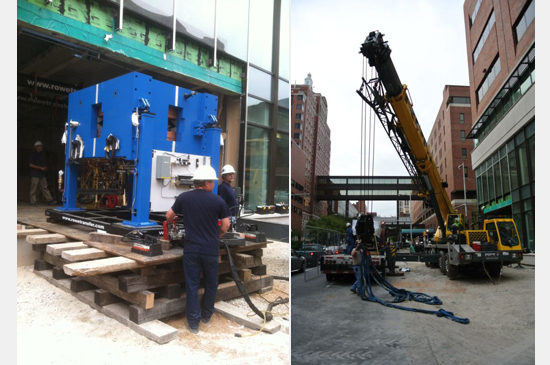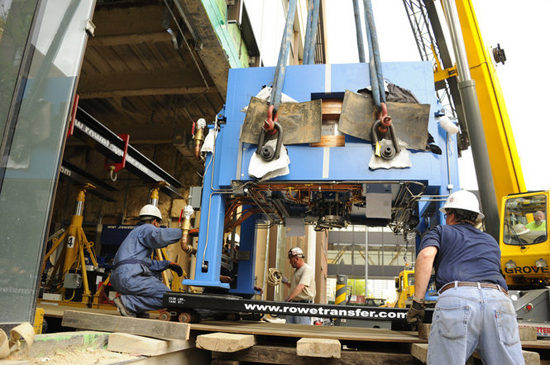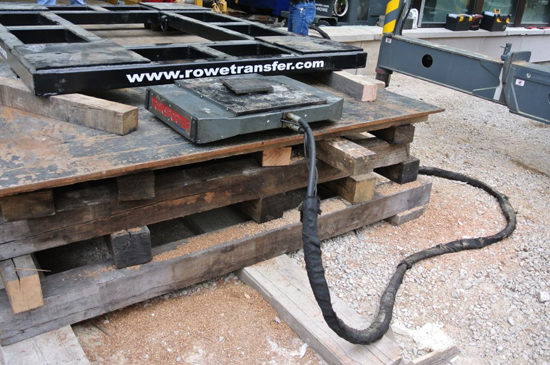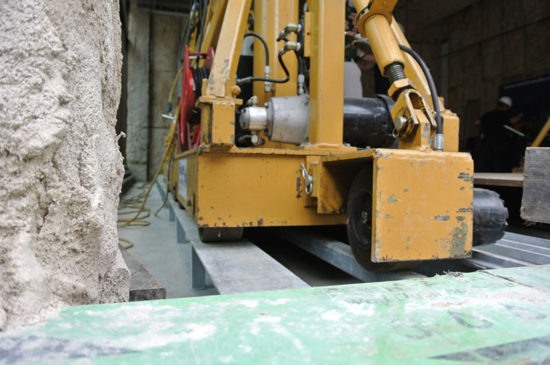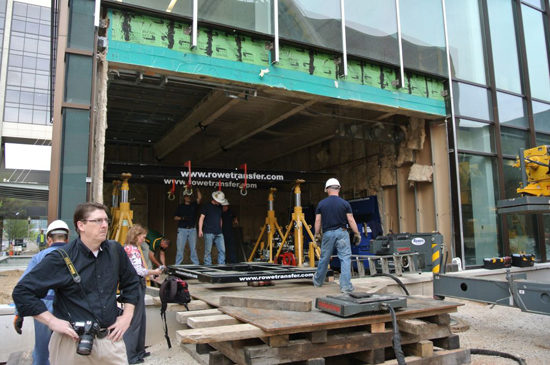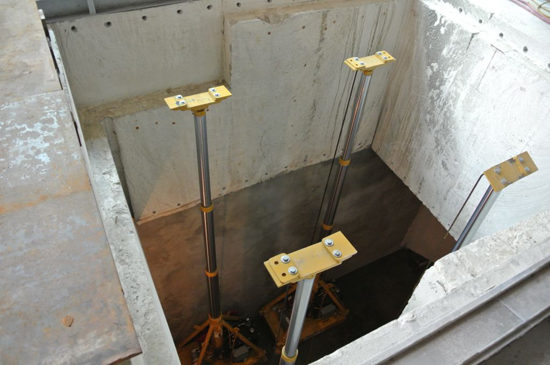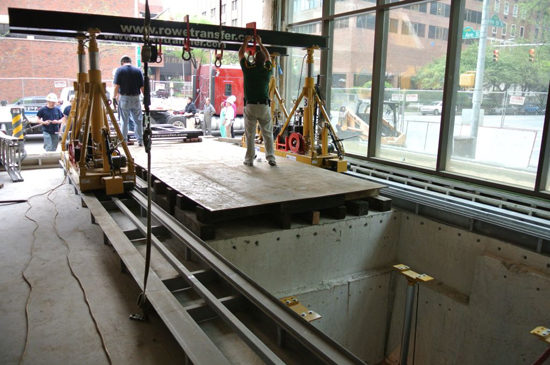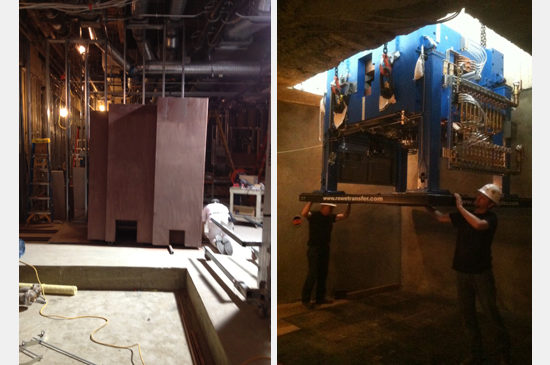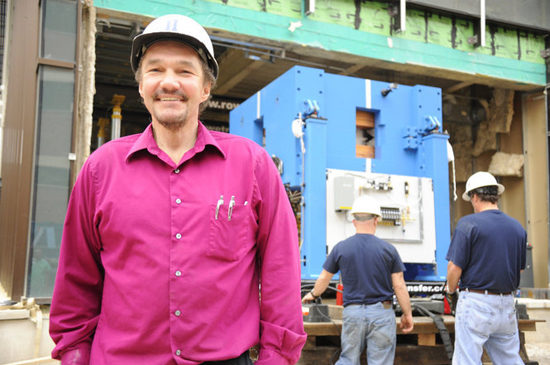
Our recent work for the University of Alabama at Birmingham (UAB) reached an exciting milestone last month. The completion of a Cancer Center Master Plan for the UAB Medical School and Hospital consolidated research, clinical trials and patient care programs from multiple building locations into more centralized and focused renovated buildings. The Wallace Tumor Institute is at the crossroads of patient care, for both inpatients and outpatients.
On April 10, the cyclotron, the main feature of Phase 3 of the Master Plan, was delivered and lowered into place in the basement of the Wallace Tumor Institute. The third and final phase of the renovation is a new Advanced Imaging and Cyclotron Research Center, located on the lower level of the building. The 18,000 SF facility includes clinical imaging with three PET-CTs, a PET-CT/MRI, ultrasound and PET-mammography. The high-power cyclotron completes the space that will create both GMP-quality clinical materials and products for the adjacent research laboratory.
This one-of-a-kind cyclotron is a particle accelerator that is the first step in making medical imaging agents for clinical and research applications. Beena Thannickal of the UAB School of Medicine news site reported, “The cyclotron weighs more than 61,000 pounds, as much as 10 large SUVs. UAB’s TR24 model, an exclusive hybrid of other models, will enable researchers to make a variety of agents, in quantities large enough to advance several research efforts.” In Thannickal’s article, Cheri Canon, M.D., chair of the UAB Department of Radiology says, “This powerful TR24 cyclotron enables UAB to produce numerous unique agents that may not be commercially available.” The cyclotron allows researchers to determine the presence of small cancers and evaluate the effectiveness of novel treatment and therapies. The equipment solidifies UAB’s reputation as a leading medical research university.
The TR24 cyclotron took nearly 18 months to build. The logistics of the operation and equipment used to move the cyclotron from the flatbed trailer to its final location in the basement vault were impressive. First, the crane lifted the cyclotron from the flatbed trailer and placed it on a custom fabricated steel frame on a platform. The platform extends over the limestone sill and into the building and continues until the hole in the floor. Electronic rollers moved the custom frame and cyclotron into the building where four mobile hydraulic gantries are connected to the cyclotron. The gantries lifted the cyclotron off the platform and rolled it on tracks until the cyclotron was over the hole. Then the cyclotron was lowered onto four gantries in the basement and the machine is lowered into the basement. While the gantries in the basement support the load, the chains used to lower the cyclotron were reset so it could be completely lowered to the basement floor. Once on the floor, small rollers with hydraulic jacks were used to put it in its final position.
Now that the cyclotron is in place, renovations to the main lobby of the Wallace Tumor Institute can be finished. The two-story lobby opens to a new glass façade at street level and brings visitors up an open staircase to the Level 2 connections to the hospitals. The open experience continues vertically as an atrium surrounded by offices and break areas on the upper floors, providing a much needed sense of place, with laboratories on the perimeter.
The project was completed with our associated architect Williams Blackstock Architects of Birmingham, AL. The grand opening of the Cancer Institute is planned for June and the University plans for the cyclotron to be operational in August.
Related:
UAB installs most powerful cyclotron at any US academic medical center
30-ton cyclotron comes to UAB to accelerate cancer treatment and research
UAB cancer center building gets revamp



